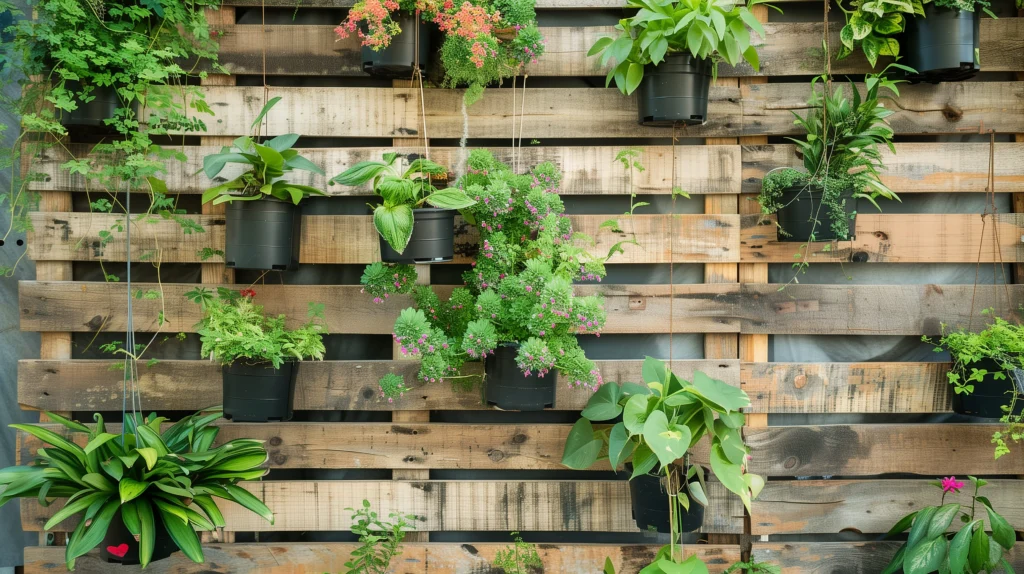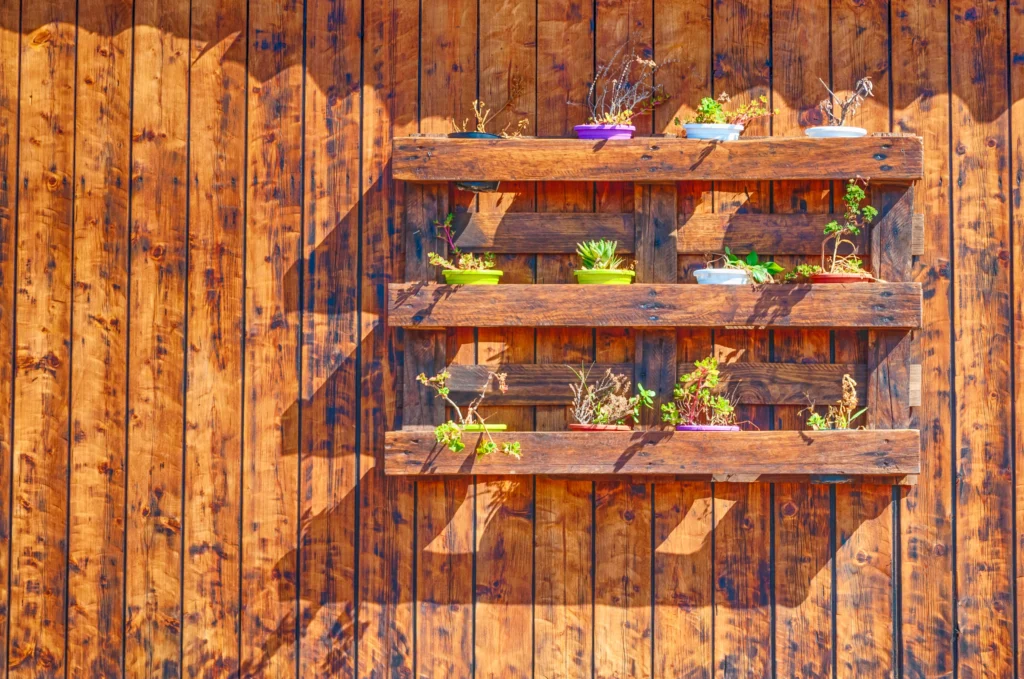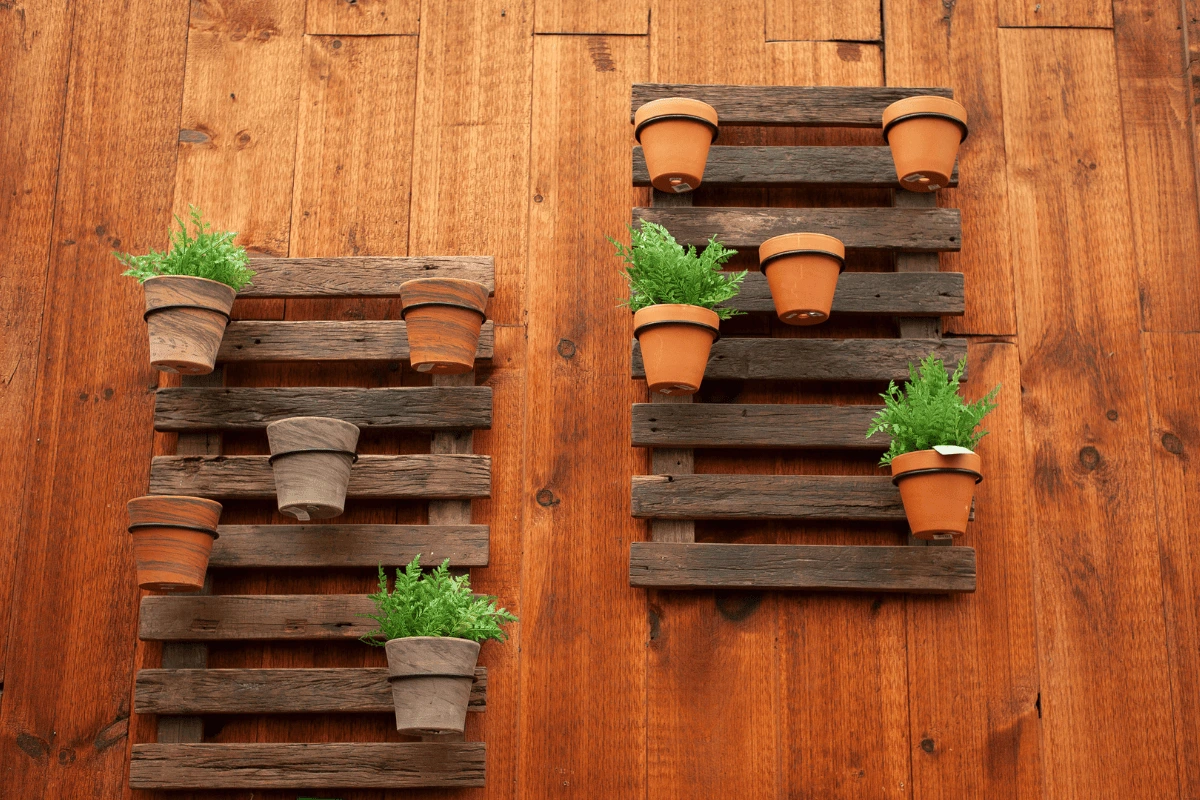A Sustainable and Creative Approach to Gardening
Creating vertical gardens with pallets and recycled wood is an affordable and eco-friendly way to transform your space with greenery. These pallet vertical gardens are perfect for herbs, flowers, or vegetables.
Whether you’re growing herbs, flowers, or small vegetables, this DIY project makes vertical gardens with pallets a charming and practical solution for both indoor and outdoor areas.
Follow this step-by-step guide to craft your own vertical garden using pallets and recycled materials.
Before diving into the steps, watch this video to see how you can create your own pallet vertical garden using recycled materials. It’s a quick and easy guide to get you started!
Why Use Pallets and Recycled Wood?
- Eco-Friendly: Repurposes materials that might otherwise go to waste.
- Affordable: Makes use of inexpensive or free resources.
- Customizable: Allows for unique designs tailored to your space.
- Durable: Provides a sturdy and long-lasting base for your garden.
Materials You’ll Need
- Wooden pallet or recycled wood planks
- Sandpaper or an electric sander
- Non-toxic wood sealant or paint (optional)
- Landscape fabric or geotextile
- Screws and nails
- Staple gun
- Pots or planting pockets (optional)
- Lightweight potting soil
- Seeds or seedlings
Steps to Build a Vertical Garden

1. Select and Prepare the Pallet or Wood
- Choose a sturdy pallet labeled “HT” (Heat Treated) to ensure it’s safe for gardening.
- Check for loose nails or damage and repair as needed.
- Sand the surface to remove splinters and rough edges.
- Apply a non-toxic wood sealant or paint to protect against moisture, if desired.
2. Design Your Garden Layout
- Decide whether to use the pallet as-is or disassemble it for a custom design.
- Plan the placement of plants, ensuring adequate spacing for growth.
- Sketch your layout to visualize the arrangement of pockets, pots, or planting slots.
3. Add Planting Pockets or Fabric
- Attach landscape fabric or geotextile to the back and sides of the pallet to create planting pockets.
- Use a staple gun to secure the fabric, ensuring it’s taut and strong enough to hold soil.
- If using pots, attach brackets or hooks to hold them in place securely.
4. Mount the Pallet
- Position the pallet upright against a wall, fence, or secure it to a freestanding frame.
- Anchor the pallet with screws or brackets to ensure stability, especially for outdoor use.
5. Fill with Soil and Plants
- Add lightweight, nutrient-rich potting soil to the pockets or pots.
- Plant herbs, flowers, or vegetables based on their depth and spacing needs.
- Press the soil gently around the roots to stabilize the plants.
6. Install Irrigation
- Set up a drip irrigation system for consistent and efficient watering.
- Alternatively, water manually using a watering can with a narrow spout.
- Make sure the soil drains well to avoid waterlogging and the risk of root rot.
Best Plants for Vertical Gardens with Pallets
- Herbs: Basil, thyme, parsley, mint.
- Leafy Greens: Lettuce, spinach, arugula, kale.
- Flowers: Petunias, nasturtiums, marigolds.
- Small Vegetables: Radishes, cherry tomatoes, peppers.
- Succulents: Echeveria, sedum, jade plant.
Maintenance Tips
- Watering: Monitor soil moisture frequently and provide water only when necessary.
- Pruning: Remove overgrown or dead leaves to maintain plant health.
- Fertilizing: Use organic fertilizers every 4–6 weeks to replenish nutrients.
- Pest Control: Inspect plants for pests and apply natural remedies like neem oil if required.
Creative Ideas for Decorating Your Vertical Gardens with Pallets

- Rustic Charm: Leave the wood untreated for a natural, earthy look.
- Colorful Accents: Paint the pallet in vibrant colors to enhance its appearance.
- Plant Labels: Use chalkboard paint or attach tags to label your plants.
- Lighting: Add string lights or LED strips for a decorative and functional touch.
Benefits of Pallet Vertical Gardens
- Sustainability: Encourages recycling and reduces waste.
- Cost-Effectiveness: Minimizes expenses by using repurposed materials.
- Versatility: Fits well in small spaces like balconies or patios.
- Personalized Design: Offers endless possibilities for customization.
Frequently Asked Questions (FAQ)
1. Can I use any type of pallet for my vertical garden?
No. It’s important to choose pallets marked with “HT” (Heat Treated) as they are treated with heat instead of chemicals, making them safe for plants and edibles.
2. How can I prevent the wood from rotting over time?
Apply a non-toxic wood sealant to protect it from moisture. Additionally, ensure the drainage system works well to avoid water accumulation.
3. What plants are best for beginners?
Herbs such as basil, parsley, and mint are simple to grow. Succulents are also a great option due to their low maintenance requirements.
4. Do I need to disassemble the pallet to make the garden?
Not necessarily. You can use the pallet in its original form or disassemble it to create a custom design, depending on your space and desired aesthetic.
5. How can I securely mount the vertical garden to a wall?
Use screws, brackets, or sturdy hooks. Ensure the wall or fence where it will be mounted can support the weight of the pallet, plants, and soil.
Conclusion: A Green Solution with a Creative Twist
Building a vertical garden with pallets and recycled wood is a fun and rewarding project that combines sustainability with creativity.
By following these simple steps, you can create vertical gardens with pallets, making your space more beautiful and promoting eco-friendly living.
For more ideas on eco-friendly gardening solutions, check out our article on Vertical Gardens and Sustainability: How to Reduce Waste.
Start your project today and enjoy the beauty and practicality of a pallet garden!

